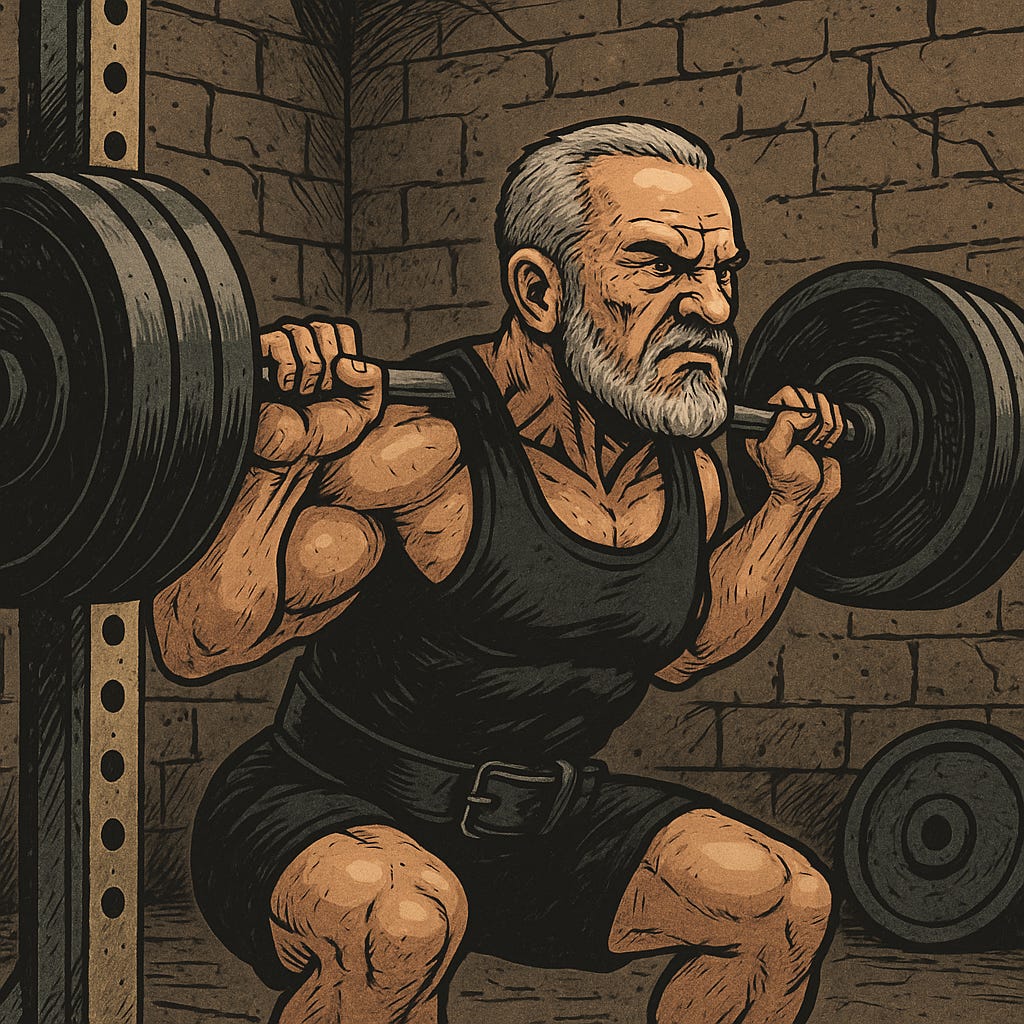“Strength is built in the sets you leave in the tank.” — Jim Wendler

We all love the feeling of lifting something heavy — it’s the heart and soul of strength training. But there’s a big difference between training heavy and maxing out. This week, I’m breaking down the concept of the strategic single: a smarter, safer way to handle serious weight without burning out, breaking down, or chasing ego-driven lifts that stall real progress. Whether you're a seasoned lifter or just learning the ropes, this is how you train heavy for the long haul.
Lifting heavy is awesome. It’s something those of us on a lifelong pursuit of strength are always chasing. Pulling a heavy deadlift on the platform — when you hit the groove perfectly and a weight that once refused to budge suddenly launches to lockout — is akin to a surfer dropping into the perfect wave. Time stops, and for a few brief seconds, you and the barbell become one.
There’s nothing better.
But the downside is the same as chasing that perfect wave: push hard enough, long enough, and the iron — like the ocean — will eventually win. This is where the strategic single comes in.
Train the Single, Don’t Test the Max
There’s absolutely nothing wrong with doing single-rep sets in your training. In fact, if you’re a competitive lifter, you must practice the art of the single. But that doesn’t mean we should ditch heavy fives and triples altogether (although this strategy did work brilliantly for strength legend Mark Chaillet).
According to Marty Gallagher, author of the excellent book The Purposeful Primitive, Chaillet built his strength on a brutally simple program:
Monday: Work up to a heavy single in the squat, then a heavy single in the bench press.
Thursday: Work up to a heavy single in the deadlift.
That’s it. Minimalist, specific, and effective. Gallagher explains that Chaillet’s periodization relied on progressively heavier singles — starting with lighter, controlled singles early in a training cycle and building up weekly until he hit his planned meet-day targets. This is the true essence of a strategic single — heavy, but not maximal, and always with purpose.
J.M. Blakely: Perfect Practice Makes Perfect Lifts
Another example comes from bench press legend J.M. Blakely, who was part of the elite club of lifters who benched over 700 lbs back in 2001.
In an interview with Dave Tate on the Table Talk Podcast, Blakely explained that his success wasn’t built on fancy training science — it was the simple combination of progressive overload and calorie manipulation that drove his record-breaking lifts.
His program revolved around 6 sets of 6 reps. Once he could hit 6x6 with a given weight, he’d add 5 lbs the next workout. As he approached a meet, he dropped to 6x3 to acclimate to heavier loads.
But before his work sets, Blakely always practiced his strategic singles. His warm-up was always identical to meet conditions — perfect practice, every session. After warming up, he’d hit 3 singles with around 80-85% of his max. Not only did this reinforce perfect technique, but it simulated the contest experience, where you only get three attempts. These singles were heavy enough to matter but submaximal enough to allow for recovery and consistent progress.
The Strategic Single vs. The Max Attempt
The key takeaway here is simple: a strategic single is not a one-rep max. Far from it.
A true 1RM is taxing, both physically and neurologically, and attempting it frequently will crush your recovery and derail your progress. Max attempts are best saved for the competition platform, not everyday training.
Strategic singles, on the other hand, allow you to handle heavy weights, practice meet conditions, and refine your technique — all without frying your central nervous system. You satisfy the itch to move something heavy, while still playing the long game.
How to Implement Strategic Singles
There are a couple of simple ways to weave this into your own training:
1️⃣ Post-Work Set Singles:
After completing your planned work sets for the day, add a little more weight and hit a single. If it moves well, you can stay there or add a touch more for another 1-2 singles. These should be clean, crisp, and never grindy.
2️⃣ Pre-Work Set Singles (Blakely-Style):
If you know your 1RM (or have a safe estimate), take 80-85% of that max and work up to 2-3 singles before your main work sets. Not only does this groove the lift, but it often “primes” your nervous system, making the subsequent work sets feel lighter and move better.
If you’re competing in powerlifting, even as an older hobbyist, strategic singles are essential for preparing both your body and your mind for meet day.
Staying Strong as an “Older Lifter”
And for my fellow over-the-hill iron addicts: just because we’ve got a little more mileage on the chassis doesn’t mean we need to trade heavy iron for endless high-rep pump sets. With smart programming and a healthy ego check, there’s no reason you can’t enjoy the strain and satisfaction of heavy lifts for the rest of your life.
I hope you enjoyed this week’s article!
Until next time: stay strong and stay healthy.



